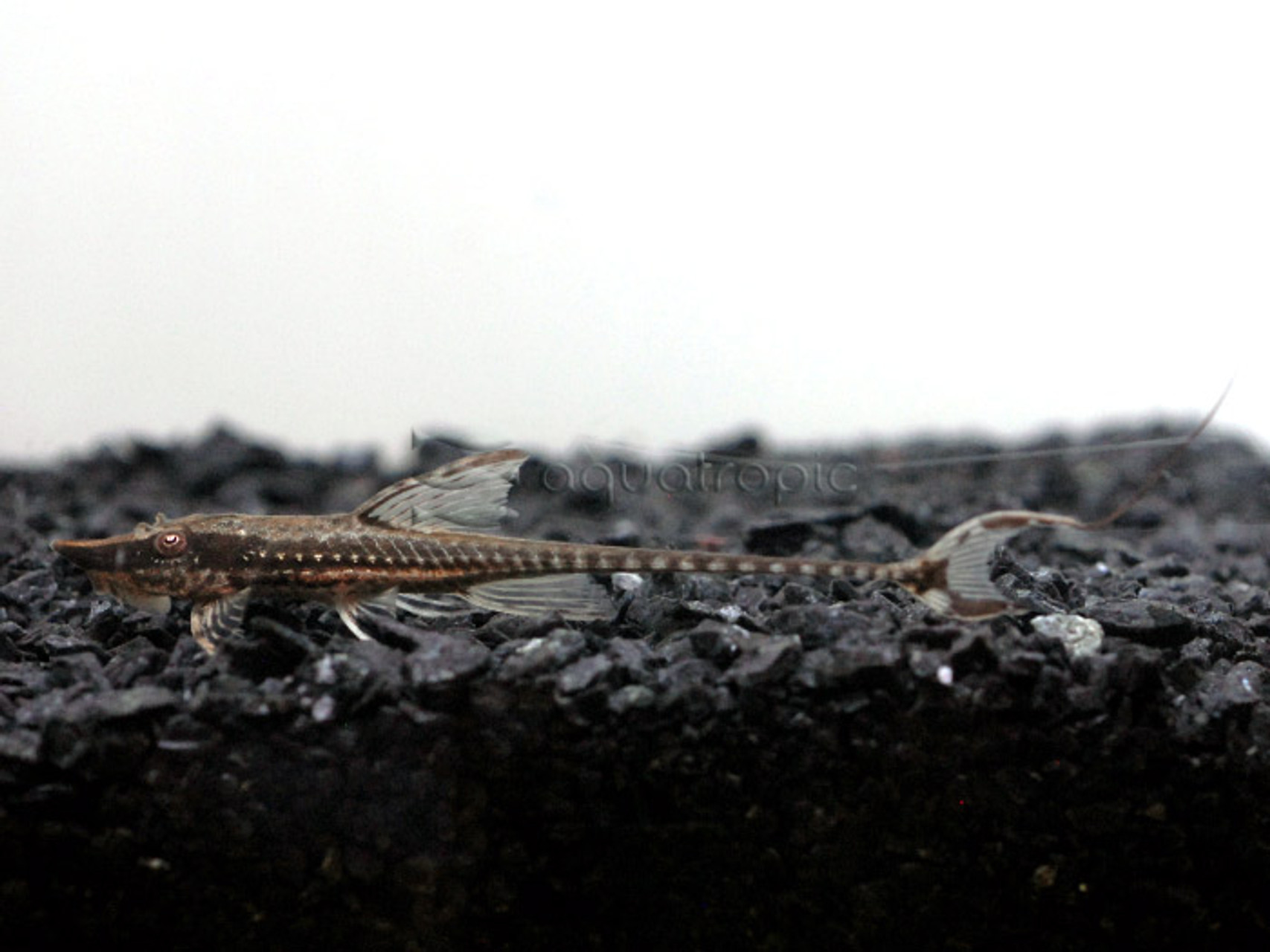Long Nose Whiptail Catfish (Sturisoma barbatum)

The Sturisoma whiptail catfishes belong to the large South American family Loricariidae, known commonly as the suckermouth or armored catfishes or, if you’re an aquarist, as “plecos”. Among the many hundreds of species that this family contains is a diverse lineage of slender-bodied species which lack an adipose fin, and among these sits the ten or so species of Sturisoma.
Until quite recently, the precise makeup of this genus was uncertain. Another similar genus, Sturisomatichthys, held species that looked much like those in Sturisoma, differing only in the relative length of the head. In 2015, this subfamily was thoroughly investigated using genetic data, and it was found that there are, in fact, two closely related groups in South America, but these didn’t correspond to the classification in use at the time. Rather than morphology, geography is what distinguishes them.
The true Sturisoma are only found in the river drainages that lay to the south of the Andes Mountains (e.g. Orinoco, Amazon, Paraguay, Uruguay), while those from Sturisomatichthys occur on the other side, in the rivers of Columbia, Venezuela and the southern parts of Panama. With this in mind, we find that out of the ten known species of Sturisoma, only one makes its way into the aquarium trade with any regularity, S. barbatum.
This species is widespread in the Paraná and Uruguay watershed, making it an excellent addition to a biotope themed on the cold-tolerant fishes of this southerly region. Mature specimens can reach roughly 10 inches in length, but their gracile build means that they are still quite suitable for medium-sized fish tanks.
Sturisoma are close relatives of the Farlowella twig catfishes, and, like that group, will spend much of their time clinging to any driftwood or leaves that are present; however, unlike that group, they tend to be more active during the day. Algae forms the basis of the natural diet, which can be supplemented with algal wafers, zucchini, and lettuce.
Whiptail catfishes are peaceful among themselves and can be kept in groups. Males possess bristly odontodes on their head and pectoral fins. Captive breeding is simple enough, with eggs typically laid on smooth surfaces, often the sides of the aquarium itself. Recently hatched juveniles are said to be fairly inept at searching out food and may not fare well without heavy feeding or lush algae growth present.